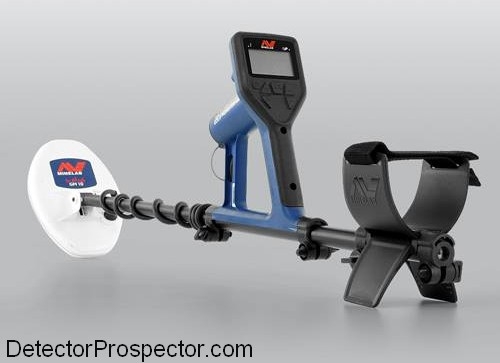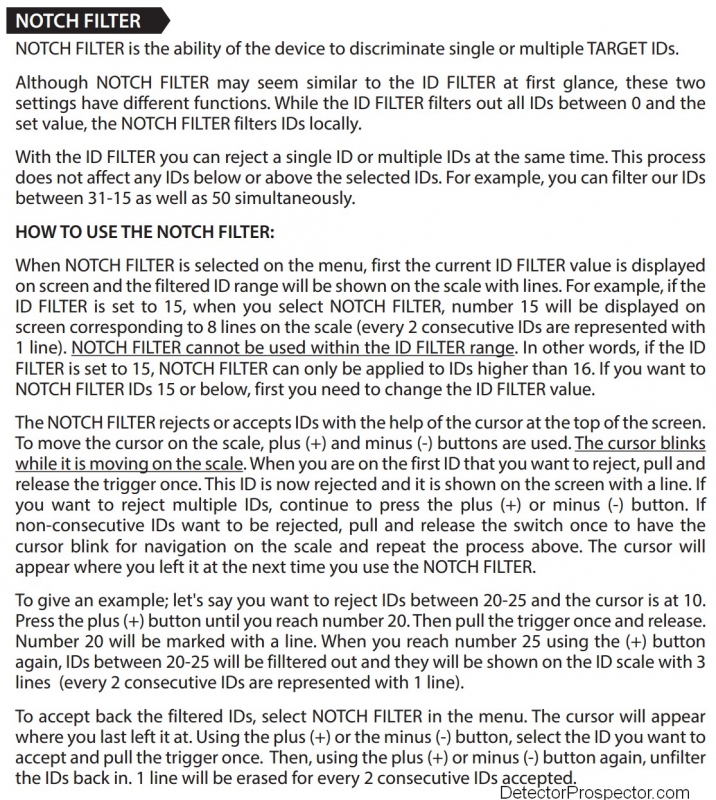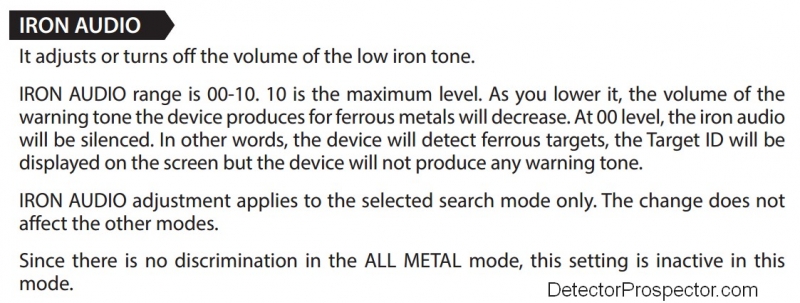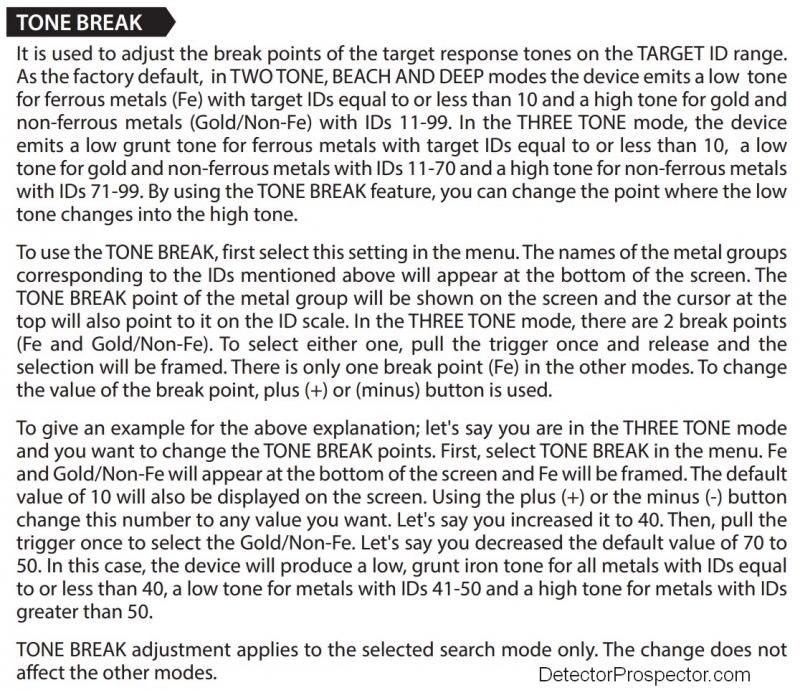Leaderboard
Popular Content
Showing content with the highest reputation on 04/24/2017 in all areas
-
Tried it out at the Vegas gold show this weekend, feels great with the little round puck coil but somewhat front nose heavy with the larger stock coil......for sure lite for a Minelab. Rep assured everyone it would be out very soon, I for sure want one. Kevin Hoagland has been field testing it for some time and is supposed to have a story/report out in GPAA magizine in the near future (I was told by the GPAA staff at the show)4 points
-
I got out to Tarnagulla today for a detect and I got 2 little specimens and then I finished off the day with this beauty. I was using the 7000 with JP`s recommended conservitive settings and this sounded like a very deep target. I was surprised when I moved it about 5" down. What really excited me about this one was I did some testing and the 2300 can get it at about 8" and the 7000 can only get it at 6". That in itself told me there was a fair bit of gold in it. I suspect a 5000 would struggle to hear it. This speci is predominately quartz but it has a thin layer of ironstone around it. In the first 2 photos are the only two pieces that are readily visible but under high magnification there are at least 100 pinpoints of gold visible all around it. I have no idea how much the ironstone mucks up the SG, but the sg for quartz says there is 28.649 grams of gold in this piece. I`m not going to drop this one in acid till my mate waves his 5000 over it. I`m hoping there is going to be a heap of gold visible once the ironstone is gone. cheers Dave3 points
-
There is the MXT with the Relic mode plus the Prospect mode iron grunt feature. There are others, like the XLT, DFX, VX3, and the V3i you mentioned, the latest being the Nokta Impact. The Nautilus is the granddaddy of mixed mode units. What you are referring to is an audio mixed mode where the disc and all metal channels run simultaneously. Unfortunately the disc portion of the signal does not reach as deep as the all metal portion of the signal. In theory Fisher could divert the F75 metered response while in all metal to a secondary audio channel to create an audio mixed mode. Especially since Dave Johnson was a key engineer on both the MXT and F75 - he clearly knows how to do it. I suspect the reason it has not happened is very few people know what a mixed audio mode is and fewer yet are asking for it as a feature in new machines. Many people consider mixed mode operation to be too "busy" for general use, especially in trashy locations. It is difficult to get the audio right for more than specific site hunting or places where targets are quite sparse. From the White's DFX Owners Manual, Page 21: "Mixed Mode - A unique hybrid operating mode. It is an all-metal (DC non-motion, non-discriminate) mode, working simultaneously with a discriminate (AC motion discrimination) mode. It is two modes, one detecting everything and another discriminating, operating at the same time. Discrimination Channel - When the loop is in motion, targets accepted by the discriminate program will produce a high-pitched beep. Targets rejected by the discriminate program will produce a lower pitched beep. High-pitched or low-pitched beeps are directly determined by the discrimination settings. An operator can select discriminate settings through the selection of an entire Program or by adjusting the accept and reject V.D.I. numbers in the Pro Options under Discrimination (EDIT). All-Metal Channel -When the loop is not in motion, or moved slowly, all types of targets will produce the same low-pitch beep. All-metal channel will by nature detect deeper than the discrimination channel. Deeper targets will produce a lower volume sound when the loop is moved slowly over the area. Tip - Advanced operators can gain extra depth by monitoring the all-metal and discriminate channels simultaneously, checking depth and digging targets too deep for the discriminate channel alone. For even more information about the target, Pro Options TONE I.D. and or V.C.O. can be added to produce a truly unique advanced users mode." That last tip is a big one! For mixed mode, it is often the targets beyond disc range that deserve the most interest. You use the disc channel to pass on shallower targets and go after those unknown but very deep targets. The assumption is the deepest stuff is most likely to be great finds passed over by others using standard discrimination. What we all are really wanting however is the full depth of a true all metal mode that discriminates to that full depth. The problem in getting there is simple. A true all metal channel only needs to tell you there is a target down there. This requires only the most minimal signal - a bare bump or break in the threshold is all it takes. A discrimination channel has to have enough phase information to make a discrimination determination. This requires a stronger signal. Any amount of detecting in bad ground will tell you target id accuracy declines with depth as the ratio of target signal to ground signal mix degrades. The deeper the target, the harder it is for the filtering circuit to tell what is target and what is ground. Eventually you get to where you know something is down there but the signal has degraded so much you/the detector can't tell what it is. It will always be easier for a detector to say "there is something down there" then it will be for a detector to identify what that something is with any degree of accuracy. This is the reason why prospectors have for many years been digging targets at depths not seen by people who need to use detectors that have some sort of discrimination capability. Ultimately all that matters in prospecting is pure power, pure depth, and that is what the machines deliver. Discrimination always robs depth, and is frighteningly inaccurate at fringe depths, causing good finds to be dismissed as trash on a regular basis. That is not to say we have not got machines that have been getting better discrimination at better depth. The F75 and CTX 3030 push accurate discrimination at depth about as far as it can currently be pushed. There will be improvements in the next few years as new technology comes on line. I never see the day coming however where we will get even just accurate ferrous/non-ferrous discrimination to the same depth that we can get basic target notification due to the fact that the one thing requires more signal definition than the other thing. A mixed mode scheme is as close to that as I think we will get. The closest thing right now to what you are asking for is probably the Nokta Impact Gen (D) mode. The Impact is neck and neck with the F75 for overall performance but with additional features the F75 lacks, such as mixed mode. Whether it can equal or exceed the F75 in your particular ground I unfortunately can't tell you. Excerpt from the Nokta Impact manual below. Gen basically allows you to run the Impact as if it is an F75 in all metal mode by setting the disc at 0. Then as you increase the disc setting, you get a iron tone for items at or below the setting you have chosen. Gen (D) is factory preset for ferrous/non-ferrous tones. The give-away that it is a mixed mode is that you get the same tone for targets at fringe depth and discrimination effects at less than fringe depths. Adapted from the Nokta Impact Owner's Manual, page 13: GEN - General Search Different than the other modes, this mode features a threshold tone which is continuously heard in the background. General Search (GEN) mode is used in 2 different ways in the IMPACT: 1) with the Disc. setting disabled at 0 2) with Disc. enabled (non-zero). When the device is first turned on, Disc. setting will be off. When the Disc. is set at 0, the device does not discriminate targets and detects all targets (metals, mineralized rocks etc.). ID of the detected target is shown on the display (except for negative hot rocks) and the same audio tone is provided for all targets. The audio tone increases in pitch as the coil approaches the target. This is the typical All Metal mode found in most detectors. When using the Disc. Setting in this mode, the device will emit a low ferrous tone for all targets below the Disc. Setting, and a higher tone for all targets above the Disc. setting which changes in pitch as the coil approaches the target. Let's say you set the Disc. to 20. The device will generate a low iron tone for all metals with 0-20 ID and a higher tone for all targets with 21-99 ID. Upon target detection, the threshold will momentarily go silent and only the target audio response will be heard. The duration of the threshold's silence is directly related to the level of the iSAT. Gain, threshold and iSAT settings in this mode are optimized to provide the best performance on different terrains. You can modify these settings based on ground conditions. We recommend using the GEN mode when more detailed discrimination is not important and not using it in heavy trash areas or areas containing many hot rocks. GEN (D) - General Search Delta In principle, it works the same as GEN mode. The difference is that the GEN (D) mode will generate the same tone for ferrous and non-ferrous targets at fringe depths but it will discriminate the shallow ferrous targets by emitting a low iron tone.2 points
-
Very nice find Dave,well done.I would recommend an SG for 50% Quartz and 50%black ironstone as a guess an SG of 3.5-4.5 for the total rock.Its a very difficult one to SG.Just from the ones I've done in the past its my guess.2 points
-
At 2:30 on Sunday April 23 the speaker at our Gallery Event is Dr. Steve Chesley, Senior Research Scientist at JPL. Steve is an expert at calculating accurate orbits for asteroids and comets, including the assessment of the risks of impact with the Earth. The title of his talk is: “The orbit of Bennu, the target of the OSIRIS-REx mission to sample a carbonaceous-chondrite asteroid”. Summary: The Osiris Rex mission will rendezvous with Asteroid Bennu in 2018 and spend 1.5 years mapping the surface. It will then sample the surface and return 60-2000 g to Earth in 2023. It is the first US asteroid sampling mission. Thanks to radar ranging observations over 12 years, Bennu has the most precise orbit in the asteroid catalog and, with Earth impact odds around 1 in 2700 late in the 22rd century, it is among the more threatening asteroids known. Modeling of the so-called Yarkovsky effect on Bennu through the use of radar and infrared observations has allowed a precise estimate of the mass and bulk density; this is the first such estimate not based on gravitational interaction with other bodies. The safe sampling of an asteroid regolith without landing requires very careful navigation. The lecture this month is at our new location: Geology 3656, just 40 yards west of the UCLA Meteorite Gallery. This is a larger and more comfortable room than our previous venue in Slichter, and about the same distance. Our next Gallery Lecture will occur on Sunday May 14 (Mother’s Day). The speaker is UCLA Professor Kevin McKeegan, the previous chair of the EPSS Department. He will speak on “The Great American Eclipse of 2017“. On Monday, August 21, 2017, a total eclipse of the Sun will be visible in the continental United States for the first time in almost 40 years. During a total eclipse the Sun is completely hidden by the Moon, the sky becomes dark, and the faint atmosphere (corona) becomes visible—looking like a beautiful halo. The eclipse will be total along a track stretching from Oregon to South Carolina. In Los Angeles the eclipse will be only partial with 2/3 of the Sun being eclipsed. I will discuss a few historically important eclipses, some general eclipse phenomena, and where and how to view the total eclipse.1 point
-
How to make a copper nugget. First get a piece of copper in the host rock (like my earlier post) and smash it with a hammer to remove most of the matrix. Doesn't matter if you hit the copper since it is soft like gold. Next tumble it with more pieces or other rocks until it looks the way you want. Here are a couple I did a few years ago, Bob1 point
-
If it comes in the old atpro/gold housing it will be such a let down.1 point
-
From Garrett AT Gold Owner's Manual, page 24: "While in ALL METAL Mode, the AT Gold will respond to the entire range of conductive and magnetic properties encountered, including ground responses. The user is continuously hearing what the searchcoil is "seeing" in the ground. Therefore, it is essential to be properly ground balanced while operating in the ALL METAL Mode. Naturally occurring minerals in the soil must be canceled out during the ground balance procedure in order to detect only the signals from metal objects in the ground. The ALL METAL Mode provides complete target information, including a Target ID pixel on the upper scale, Digital Target ID, and depth reading. The AT Gold thus allows the operator to remain in the ALL METAL Mode at all times, in contrast to some detectors which require the operator to switch to a Discrimination mode to obtain Target ID. Be aware that some deeper targets (faint audible signals) may exceed the reach of Target ID. Because the ALL METAL Mode permits no discrimination, the detector will give an audible signal to indicate every piece of metal it scans over. Target responses will normally be heard as a proportional Medium Tone. However, the AT Gold is a unique All Metal detector in that its Iron Discrimination and Iron Audio™ features can be used to hear if detected targets are ferrous, as indicated by a low tone. Iron Discrimination levels can only be adjusted in the ALL METAL Mode if the Iron Audio feature is on and these changes will not be retained when the detector is switched off. (See Iron Audio section, pages 30–35.)" Page 35: "Iron Audio Use in ALL METAL Mode: In the ALL METAL Mode, all metallic targets encountered by the AT Gold are normally identified by a Medium Tone. The use of the Iron Audio feature, however, allows the introduction of a Low-Tone response to audibly indicate the ferrous content of targets. This Iron Audio feature in a True All Metal Mode metal detector is a Garrett exclusive! The Iron Audio feature should be used in the All Metal Mode as a means to check targets for iron content. Therefore, it is not recommended to hunt with the Iron Audio feature continually switched on. To fully appreciate All Metal Iron Audio, use an iron nail and a coin to experiment. Select the ALL METAL Mode, temporarily switch on Iron Audio, and set the IRON DISC to 35. (Note: Iron Audio must be switched on in order to set Iron Discrimination in the ALL METAL Mode.) Switch Iron Audio back off and pass the nail over the searchcoil. The nail will respond with a clean Medium Tone, similar to that of a good target, such as the coin. Now, switch on Iron Audio and separately pass the two targets completely over the coil again. The distinctive Low-Medium-Low response of the nail now indicates a target that is unmistakably iron. Note that the coin, however, continues to respond with a clean Medium Tone." The AT Gold function above is a type of mixed mode, layering a disc channel response over the all metal channel. As usual the ferrous indications do not reach as deep as the all metal channel. The Minelab X-Terra 705 has a similar function in the all metal Prospect Mode which Minelab calls Iron Mask. However, instead of producing a tone the Iron Mask function causes the audio to break up or blank completely on ferrous targets. The Iron Mask setting is adjustable. Lower settings will call more ferrous items good but at less risk of accidentally calling a gold nugget ferrous. Increasing the setting rejects more ferrous items but increases the chance a non-ferrous item will be incorrectly rejected. The XP Deus Gold Field program has their own version of Iron Mask called Iron Amplitude Rejection (IAR). From the XP Owner's manual, page 9: "The program No 10 GOLD FIELD uses another discrimination method, called IAR (Iron Amplitude Rejection): the range of discrimination can be applied from 0 to 5. It applies only to targets that produce strong signals – typically shallow ferrous items. It will not reject deeper targets which may come across as ferrous when they are buried in mineralised ground, to ensure good targets are not rejected by mistake. Higher discrimination values, enable the detector to reject deeper ferrous. Gold nuggets buried deep in mineralised ground can generate a similar signal to a ferrous item, so in this case it is better to reduce the level of discrimination." All White's Goldmasters have an "Iron Grunt" feature that operates at a relatively safe level of "bias" and gives a broken low tone on ferrous targets while in all metal mode. The GMT refined this by adding a "Probability Meter" that is an early version of the "Confidence Meter" seen on some other models these days. From White's GMT Owner's Manual, page 12: "Iron I.D."GRUNT" ON - IRON I.D. information is obtained by using the trigger switch under the display pod. Locking the trigger forward adds sound to the IRON I.D. system. Now when the search coil passes over an iron target, a "GRUNT" sound is added at the tail end of the normal metal target zip-zip sound. The alert "GRUNT" is triggered when the % probability of the target being IRON reaches 85% to 95%. The trigger locked forward for audio alert does not change any function of the system, it just adds sound. ALL targets will be heard with NO LOSS OF DEPTH. Trigger Squeezed - Iron I.D."GRUNT" ON - While the trigger is squeezed, the GMT IRON I.D. system performs a very unique function. Normal tracking STOPS and IRON I.D. adds each successive pass to its memory bank. Unique to the GMT, we call this feature "TARGET ANALYSIS". Since tracking stops during this process with the trigger squeezed, this analyzer cannot be utilized while searching. It is only used to"TEST" a suspected IRON target. It is also important to make long enough passes over the target to include the ground in the search field. This allows the detector soft ware to perform an accurate analysis. The sweep should be wide enough for the coil to completely leave the target. 1 1/2 to 2 feet is adequate for a small shallow target, wider for deeper, larger targets. This is DIFFERENT from most other metal detectors you may be accustomed to, which use a conventional discriminator to attempt to identify iron. The main thing is not to hover or dawdle over a target while analyzing. As with the "locked forward position", the "squeezed" position also functions while in MANUAL Ground Balance. NOTE* THE VISUAL IRON I.D. SYSTEM IS OPERATING IN ALL THREE TRIGGER POSITIONS. The % of Iron Probability is indicated on the display by a left to right bar graph. This system is totally independent of the Audio Alert System." The White's MXT offers the same Probability Meter and Iron Grunt features as the GMT when operated in its Prospecting Mode. There is a benefit in that the MXT is running at 14 khz instead of the 48-50 kHz of the Goldmaster/GMT models, making this a potentially more useful mixed mode function for general coin and jewelry detecting. The GMT runs too hot for many general detecting purposes. While the MXT is operating in the Prospecting Mode, iron targets 80% and over produce an audio grunt when detected. The new White's MX Sport shares many features with the earlier MXT models including the Iron Grunt while in all metal mode. From the MX Sport Owners Manual, Page 26: "Iron Grunt - In the All Metal modes, when the MX Sport is sure the target is iron, the iron grunt feature can speed detection by making it obvious the metal is iron. Strong IRON type responses are assigned a distinctive “GRUNT” sound. To turn on Iron Grunt: Assure you are in an all-metal program: All Metal, Relic, or Prospecting. Press Options and select Iron Grunt with the up and down arrows. Use + and - to select 1 = Iron Grunt, or 0 = OFF (no iron grunt)."1 point
-
1 point
-
Very nice specie Dave and hopefully it will be close to your estimated weight. should clean up nicely for you and congrats to you for your nice find. Also thanks for sharing your pics. Cheers. Mike.1 point
-
So some of you may have seen my piece I put in the thread about 'What are your detecting goals' as I was happy I had reached the goal of getting a nugget over 1 gram (it's sad but you have to start somewhere ). Well 24 hours later and I've got another. 11 grams is the big one. 6 is the littler one. And 3 smallies which have been my standard fare. Its been a beautiful weekend here in Northeast Victoria for Easter. These beauties have topped it off. Happy Easter everyone.1 point
-
Nice find! The SDC does indeed still have an edge on some small and specimen gold due to the smaller coil. That edge should disappear once a small coil is available for the GPZ although because of the differences between the way the two machines function the SDC may continue to have some advantage in extreme mineral ground.1 point
-
Nice mate yeah on species the 7000 excels over the 5k hands down.1 point
-
Ok, I swing corrected. Here is my update. The piece of polycarbon I bought is 1/8" thick. At first there is a 'heavy shock' and I would probably recommend half that thickness if you can get it. Once I got the hipstick adjusted it actually performed quite well being more like a bulldozer on the grass. It has its place but not every place. My attachment system is the Lunk method. There is a picture hanger from 3M called Command. You press two surfaces together and they 'click' and this leaves a space which makes it easy to tilt the coil and get the sand, seeds, leaves and stuff off the coil. You don't need to do a full raise. I attached it to my siliconed cover and I can remove it and replace it as the hangers are similar to Velcro. I could have attached it to the coil and saved some weight. There is no falsing. The shock of hitting a rock has been dampened by the two systems I have on it. Now for the 14. I have the aftermarket Miner John. This has been silicon sealed and I don't need anything else for that. Nothing gets in. That coil got me 4 more meteorites yesterday at Gold Basin for about 160g. It was too late in the day for me to swing the 19. I cleaned them up a bit so now ...1 point
-
Randy, You will be waisting your money on the nickel test kit, you really need an xrf test, to determine nickel content. Dave1 point
-
1 point
-
OK, the tone options here are really great. In short, when in three tone mode you can choose where the tone shifts occur on the 0 - 99 scale. For instance, you can make 0 -25 tone one, 26 - 70 tone two, and 71 - 99 tone three. You choose the ranges depending on what you want to focus on. For jewelry hunting, I may want the second zone to go from just above small foil, say maybe about 15, all the way up to just below zinc penny at about 65. Once I decide where I want the tone shifts to occur, I can now set each of these three tones to produce any tone I want, from 100 hz to 700 hz. It does not have to be low, med, high if you would rather focus on the mid range and make it low, high, med instead. Finally, the zone one range has its own volume control. This would normally be set up as the ferrous range and so you can lower the volume in this range to make the normal barrage of targets more pleasant to listen to. Now, many people people like to hunt with tones only and avoid blocking anything out. However, never say never as notch discrimination can offer up neat tricks. Especially when you have this degree of fine control - every single target number from 0 - 99 can be independently set to accept or reject. An old White's trick is to realize that most trash targets when you have a 0-99 id range do not produce a single tight target number. Good targets like a coin or a ring will have a tight target id, but trash will jump around or deliver a spread of numbers. You can use this to good effect by selectively blocking only a single id number in likely trash ranges. This will have the effect of causing likely trash items to break up but not be completely eliminated. In other words, you can make trashy items sound trashier! You can of course just block whole areas. If in total coin cherry pick mode, eliminate all targets below the nickel range, leave a nice ten id range open for nickels (have to account for target drift due to ground conditions/depth, which you can tune with time as you learn responses). Block out the range above nickel up to zinc penny, or if you hate them like I do block them also, but be aware Indian Head pennies read in the zinc penny range. You could set the first tone break above nickel and the second tone break above zinc penny. Block below nickel and from nickel to zinc as described above. Now have nickels be a low tone, zinc pennies a medium tone, and all other coins a high tone. Starting to get the picture? There is some pretty powerful capability here. Me, being the crazy guy I am might block all the ferrous and all the targets from zinc penny on up (I am not coin hunting). This mid zone is the "gold jewelry zone". Some rings will go as high as zinc penny but I am not digging all the zinc pennies to get them. Now set the tone breaks to low tone for foil (small rings) med tone for nickels (med size rings) and high tone above nickel to zinc (big rings). I might also open up just the quarter zone to pay for gas money. Now you know one of my favorite jewelry hunting target schemes!1 point




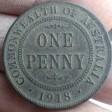
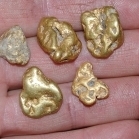
(1).thumb.png.8e7a6cc7820a86cd4539952816693441.png)



